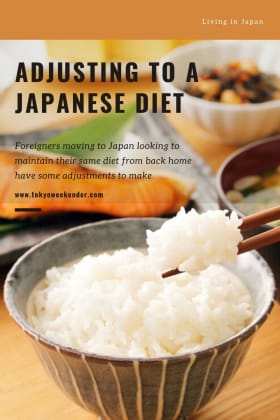When Victor N, a fitness professional and model, arrived in Tokyo from the US he discovered that thanks to the Japanese diet it was easier to stay lean. For one – where Western restaurants focus on gigantic portions to ensure patrons get the most bang for their buck – Tokyo restaurants are known for their controlled portion sizes.
While Victor found daintier meals helped him stay trim, Japan can also provide obstacles for those following specific diets and fitness regimens, particularly those who are looking to put on big muscle through big eating.
Adapting to a Japanese diet isn’t just a matter of cutting out or changing one food. Many aspects of what you eat will change and that can affect people’s health and fitness in different ways.
What makes a Japanese diet sustainable for the modern lifestyle is not that it eliminates fast food or refined sugars, but that it practices moderation. https://t.co/kmVQBh1uAn @heatedmag
— Mark Bittman (@bittman) June 18, 2020
Where’s the Beef?
The standard selection of meats in Japan is limited in many ways compared to Western countries. Meat, like beef, is generally more expensive, while protein like lamb and turkey require extra effort to locate.
“One of my main staples for protein back in the US was ground lean turkey,” says Victor. “Getting lean ground turkey [in Japan] is almost impossible.”
Even when you can find what you’re looking for, meat is typically a small percentage of Japanese meals. This general lack of protein can be a rough adjustment when coming from a country where meat is the main staple.
What Japan lacks in feathered and hooved sources of protein it makes up for with its proximity to the ocean. In the US, Victor infrequently ate fish and to boost his intake of omega 3s he supplemented with fish oils, which is something that many in less coastal parts of the world find themselves doing. But since moving to Japan Victor hasn’t needed the extra boost.
Seasonal Japanese Ingredients and How To Use Them: Shiso 😋 (via @Tokyo_Weekender) https://t.co/lyUk962QtQ pic.twitter.com/FJ4Y3ui560
— Arigato Travel (@ArigatoTravel) May 26, 2020
Getting Your Vitamins
While it can be a challenge to adjust to eating more seafood, increasing dietary diversity and your range of vitamins and nutrients can lead to many health benefits. Brandee, a health-conscious English teacher and five-year veteran of the Japanese school lunch program says she found that the Japanese school lunch is arranged carefully, taking nutritional balance into consideration.
“It opened me up to eating more well-rounded meals,” she says. “And got me eating healthy foods that I wasn’t familiar with because they are not popular in America, such as bean sprouts and seafood.”
Fish and bean sprouts, which are high in protein, can replace the protein you miss out on by eating less meat. Also, you can always find tofu “which is a simple way to add more protein to a dish,” says Victor.
Japan has no shortage of diverse and healthy plants full of vitamins and minerals that can boost your health. For instance, seaweed is full of iodine and vitamin C. This can help with thyroid and dental health, as well as body repair and recovery.
If you’re looking for an alternate source of vitamin C, Japanese plums and yuzu contain high amounts. Daikon radishes have high levels of potassium, magnesium and folate, which support a healthy metabolism. All are fairly cheap, low calorie and easy to find in Japanese meals.
Why Was Everyone in Japan Baking Bread During the Lockdown? (via @Tokyo_Weekender) https://t.co/gaVzWvdqCs pic.twitter.com/ZFqrRjjnUl
— Arigato Travel (@ArigatoTravel) June 4, 2020
A Side of Rice
Where Western countries eat mostly bread and starchy vegetables like potatoes, the Japanese diet is famously based around white rice. Whole grains and vegetables leave you fuller for longer due to a higher level of dietary fiber.
Fiber digests slowly after eating so it can contribute to lasting feelings of fullness. Switching to white rice can feel a little underwhelming and leave you feeling empty comparatively. Even when looking at white bread compared to standard Japanese white rice, bread holds lower calories per gram, and higher protein, so you can eat more for less.
However, rice tends to have a more diverse mineral and vitamin profile than white bread. That said, whole grain variants will always come out on top when added into the mix. This can be one of the biggest challenges to overcome in terms of nutrients, and feeling full with every meal, as grainy carbs are much more difficult to find here than other countries.
Losing fat and gaining muscle, at the most basic level, is about calories in to and out of the body. If you adjust what goes in to match your fitness goals, while keeping variety in your choices, you can find success even when adjusting to a culturally new diet. It just takes some adjusting.
Updated On January 30, 2023









